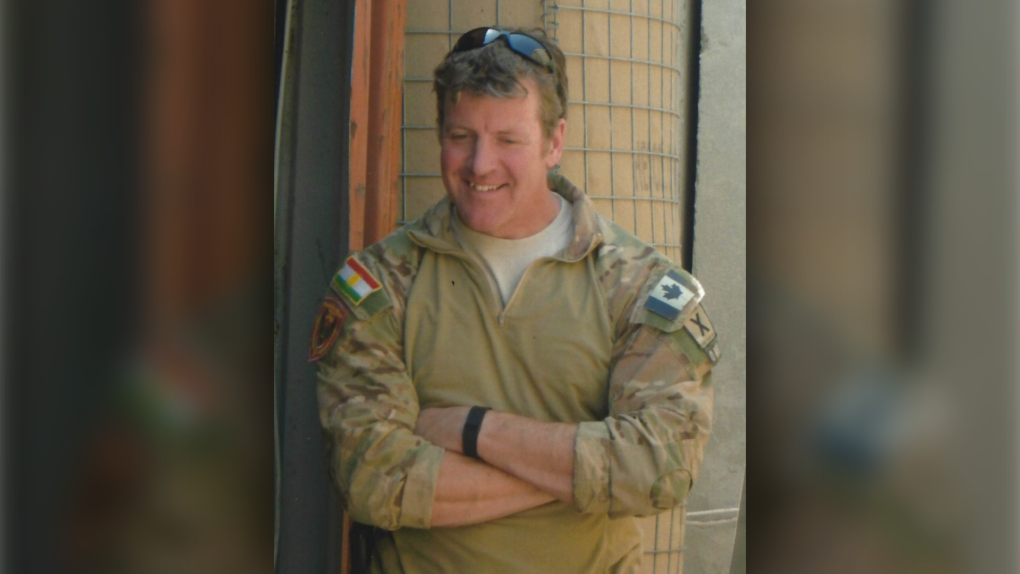Researchers are trying to determine if a number of Canadian veterans are suffering from Chronic Traumatic Encephalopathy, also known as CTE — a disorder previously found in the brains of professional football and hockey players after their death.
CTE is often accompanied by psychiatric symptoms, which could develop into suicidal thoughts, according to researchers. However, little is understood scientifically about a possible link, nor how widespread CTE is among veterans.
Standing inside a brain imaging lab at Toronto’s Centre for Addiction and Mental Health, researcher Isabelle Boileau says it’s possible that armed forces members who’ve been exposed to explosions could be suffering from CTE.
The challenge is detection. Currently, CTE can only be discovered once a person has died. Boileau is leading a research study that examines traumatic brain injuries in military veterans. So far, about 25 people have volunteered to take part. She hopes more people join.
“There are certain documented cases of (military) individuals who’ve died by suicide that had proof in their brain that they had CTE,” said Boileau.
A military suicides report released in 2021 outlined that, over the previous decade, 191 Canadian military personnel died by suicide. By comparison, 158 service members were killed in Afghanistan from 2001 to 2014.
Brendan Hynes served in Canada’s military for nearly 30 years. (Image courtesy of Brendan Hynes)
Brendan Hynes served as a member of the Canadian military for nearly three decades. For 11 of those years, he was a member of JTF2, Canada’s top-tier special operations force. Dispatched to Bosnia, Afghanistan and Iraq, Hynes estimates that he’s been exposed to approximately two thousand explosives.
He says the physical toll of working with explosives is akin to “being in a boxing match each day,” though he never thought his work in the military would take the toll it did on his brain.
While still enlisted, he began to struggle with his focus and temperament. After being discharged, the father of two nearly died by suicide. He recalls thinking about it one day while driving home from shopping with his daughters: “I was going to go home with my kids and I’d come up with a plan for how I was going to take care of that, how I was going to end my life,” he said.
“That institutional abandonment that our soldiers and veterans suffer, I say that’s one of the greatest factors we see in the epidemic that is veteran suicides,” says Hynes.
In a written statement to CTV News, Canada’s Department of Defence told CTV News they welcome the research being done and are doing their part to put in new safety procedures, saying in part that “the unique nature of injuries resulting from military deployment creates specific challenges for both CAF personnel and the medical community responsible for providing combat casualty treatment and post-deployment care.”
Hynes says more needs to be done. He’s learning about far too many members of the military who haven’t received the support needed.
“Someone, [from the military] about every four to six months, who I know… who I’m close to, takes their own life,” said Hynes.
Hynes credits the love and support of his wife and daughters as one of the only reasons he’s still here to tell his story.

The former special forces soldier is demanding more support from the Canadian Military for those suffering from a traumatic brain injury.
CTV News asked the Department of Defence if they’ve followed any recent medical research recommendations to prevent brain trauma in members of the armed forces.
“While multiple studies on brain injuries have been published with various conclusions over the past decade, the Department of National Defence (DND) has erred on the side of caution by decreasing training exposure limits in terms of round counts with high-caliber weapons, and increasing the safe distance to explosives during training,” wrote the department in an email.
“Several research initiatives are still ongoing to better understand the physiopathology of brain injury (whether acute or repetitive), with the goals of early injury prevention and diagnosis.”
With files from The Canadian Press


